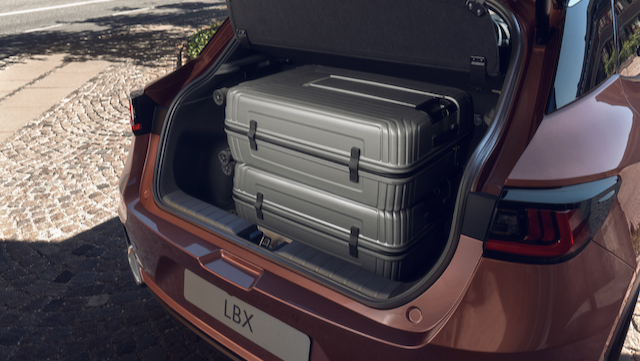27/08/2024 There are a number of reasons why you should consider the Lexus LBX if you’re looking for a new compact premium car. Firstly, it is a brand-new model and the smallest and cheapest Lexus model you can buy. Secondly… no… that’s it!

Seriously though, the new LBX is not an SUV, therefore you’re not going to annoy anybody with conspicuous consumption. The five-door LBX hatchback, LBX by the way stands for Lexus Breakthrough Crossover, has a refreshingly small footprint on the road and is also disarmingly cute. The new baby Lexus, despite being a brand new model, is based on an excellent tried and tested car – the Toyota Yaris Cross and its GA-B platform. The well-styled Yaris Cross is cheaper to buy, but lacks the premium badge appeal of the Lexus brand.

The exterior of the LX is cute and interesting, with plenty of design detail to enjoy. The model is also at the start of its life, which gives it novelle and curiosity appeal. The LBX will bring a lot of new customers to Toyota’s premium brand. The exterior exudes a degree of sophistication while appearing less aggressive than its larger siblings. The Lexus badging adds a bit of street appeal. The exterior is well thought out and its proportions seem right-sized for urban and city use.

Inside the cabin gets the Lexus treatment. There are nicely covered leather seats and other points of contact. A familiar Lexus steering wheel and good connectivity. There is the obligatory touchscreen and thankfully a few buttons for the climate control system. The soft-touch materials play a key part in upping the LBX’s game to premium. There are a few Lexus tweaks like the door handle mechanism that is servo-assisted. The general cabin ambience is pleasant and it delivers a sensation of premium motoring. Cabin space is cosy up front, and in the rear, well, it is cramped for adults. Then again the car is a compact size. We had a sizeable amount of cargo to carry in the modest 332-litre boot (smaller than the Yaris Cross) and the LBX managed it with only minor Tetris skills needed.

Under the petrol hybrid’s bonnet is a three-cylinder, 1.5-litre petrol engine and a nickel-hydride battery (charged by the engine). The gearbox is an automatic CVT. The combined power output is 136hp and 120nm. The LBX weighs a modest 1,330kgs, so emissions (103g/km) and fuel economy figures are very good, diesel-like in fact, averaging 4.5L/100km. On the road, the LBX is utterly adequate to drive. It is effortless to use thanks to its petrol hybrid nature. You simply stick the LBX in D and off you go.

The LBX can cruise but with a 0-100km/h time of 9.2 seconds, it doesn’t really have much high-performance potential on tap. It suspension is not cutting edge with a conventional small car set up of MacPherson Strut front and Torsion Beam rear. The long way home will not be taken in the LBX. The feeling from the driver’s seat in the LBX is, one of contentment. You are aware of the lack of weighty/premium feel to the LBX and are reminded that it is based on a light compact Toyota. The LBX looks sportier than it is, but ultimately I wasn’t too put out by that during our testing. Lexus Safety Sense 3 is standard (comprehensive amount of safety driving aids / ADAS).

Many car buyers are obsessed with badging and to a degree it is true that a car can enhance your perceived social status – on a superficial level. The ability to gain access to the premium car club has become easier with the LBX as it is the new first rung on the ladder. Whether the LBX offers enough over a well-specced Yaris Cross is a dilemma for potential buyers to resolve.

One thing is for sure, at a time when people are more concerned about reliability and value for money, having a car that is at the start of its model lifecycle, built on Toyota technology, is a compelling argument for consideration. The LBX grew on us over our week of testing and is an utterly charming small car. Pricing starts from circa €40,000. Grades available: Elegant and Emotion. Michael Sheridan




